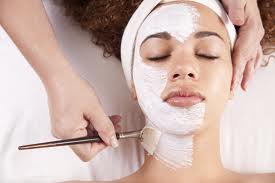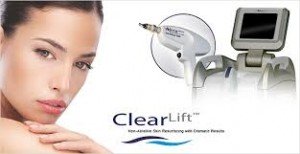
While some learn to love those tiny brown spots on the tip of the nose, cheeks and shoulders, others look for anything to fade freckled skin. Thankfully, you can lighten unwanted freckles and spots instead of just covering them up with makeup. And, obtaining brighter, smoother, spot-free skin may be easier than you think. At the office of Dr. Mark Bishara we want to educate our patients about proper skin care and help them improve the health and appearance of their skin.
Protect and Prevent
With a medical name like ephelides, it’s no surprise that freckles get a bad rap. While “simple freckles,” the tiny brown spots on your skin you have had since birth, are harmless, lentigines, or “sunburn freckles,” need to be taken more seriously. Usually larger in size, more red in color and with an irregular border, these spots are sure signs of sun damage. No matter how old you were when you first noticed your freckles, sun exposure can only make them darker and greater in number. The easiest way to prevent freckles from forming is by using sunscreen. “I recommend applying sunscreen with at least an SPF of 30,” says New York and Miami dermatologist Fredric S. Brandt, MD. “No product will effectively lighten skin without the use of sunscreen on a daily basis.”

On the Bright Side
Over-the-counter brighteners can help to even out freckles and spots for more evenly toned skin. The SkinCeuticals line of skin care products offers 3 different product categories to: Prevent, Protect and Correct. Many of their products help to reduce the appearance of spots, leaving the skin looking luminous and glowing. For more information on the SkinCeuticals products and to find out the right skin care regimen for your skin type and skin condition please visit their website at www.SkinCeuticals.com. Our office offers the SkinCeuticals skin care line and can also help you choose the right product for you.
Zap Away
For serious long-term freckle fading, laser resurfacing lightens and retexturizes. Unlike chemical peels and microdermabrasion, which just exfoliate, pigment-specific lasers, like the Alma laser systems, specifically destroy pigment in the epidermis and dermis to eliminate discoloration with minimal side effects. Fractional resurfacing lasers poke tiny holes into the skin to deliver a dose of controlled heat to the deeper layers, eliminating freckles from the inside out. Not a laser, but similar in terms of results, Intense Pulsed Light (IPL) uses broadband light to diminish freckles. Not all lasers are alike, so it’s important to diagnose your skin accurately prior to treatment.
Please visit our website at www.MarkBisharaMD.com or call us at (817) 473-2120 for more information.
1. Retinoid creams

2. Over-the-counter peptide creams

Creams containing peptides—short snippets of linked amino acids—can be useful for reducing the appearance of wrinkles and fine lines, but they haven’t been shown to work as well as retinoids. As skin ages, it loses collagen and becomes wrinkled and thin; creams containing peptides are supposed to encourage the skin to make new collagen. Peptides are found in a variety of products, from the inexpensive to the very expensive. There are many SkinCeuticals product that can help.
3. Microdermabrasion

Microdermabrasion uses tiny, fine particles or a very hard diamond-tipped wand to slough off cells from the top layer of the skin and encourage new skin growth. The procedure is usually not painful, though it can be uncomfortable, and it doesn’t require an anesthetic or recovery period; skin heals quickly. But you may require multiple procedures spaced a few weeks apart.
4. Laser skin resurfacing
5. Chemical peels
6. Botox

7. Filler injections

Injections of fillers containing hyaluronic acid can fill in lines and wrinkles and add volume to skin. Hyaluronic acid is a “naturally occurring sugar that gets lost when you age,” and injecting it into wrinkles effectively plumps them up. Juvederm Ultra Plus XC and Juvederm Voluma are the newest and best.
8. Cosmetic surgery

9. Try prevention

If all this sounds extreme, remember that you can start immediately to prevent any further damage: Start wearing sunscreen every day. Lifetime exposure to the sun can wreak serious havoc. When people were younger…they didn’t think the sun caused any bad signs, but now they’re really feeling the effects of it 30 years later.
This information is brought to you courtesy of Dr. Mark Bishara and The Paragon Plastic Surgery & Med Spa in Mansfield and Southlake, TX

The US Food and Drug Administration (FDA) has approved polidocanol injectable foam (Varithena, BTG) for the treatment of incompetent veins and visible varicosities of the great saphenous vein (GSV) system, British pharmaceutical company BTG announced today.
Varithena (formerly known as Varisolve) is a pharmaceutical-grade, low-nitrogen, polidocanol foam dispensed from a proprietary canister device. It is a “minimally invasive, non-surgical procedure that requires neither tumescent anesthesia nor sedation,” the company said in a news release.
In a pair of phase 3 placebo-controlled studies known as VANISH-1 and VANISH-2, polidocanol injectable foam led to clinically meaningful improvement in the symptoms of superficial venous incompetence and the appearance of visible varicosities and addressed the underlying venous incompetence in the majority of patients treated, the company said.
It is estimated that more than 30 million adults in the United States have varicose veins, with women twice as likely as men to develop varicosities. Varicose veins may require treatment for symptoms including leg pain, aching, heaviness, restless legs, cramps, throbbing, fatigue, itchiness, tingling, and edema. Current treatments for varicose veins include thermal ablation and surgery.
Polidocanol injectable foam “provides US physicians with the only approved comprehensive therapy to improve symptoms and appearance for a wide range of varicose veins, including incompetent GSV, accessory saphenous veins and visible varicosities of the GSV system both above and below the knee,” BTG said.
According to the release, the company plans to launch the product in the second quarter of 2014.
This News is brought to you courtesy of Dr. Mark Bishara and The Paragon Plastic Surgery & Med Spa in Mansfield and Southlake

Cosmetic Procedures- Laser Skin Rejuvenation
Today’s lasers can diminish many signs of aging — from early wrinkles and age spots to deep lines and spider veins. A laser procedure often can be performed in less than an hour and may require little or no downtime.
Also Called
Numerous lasers and light devices are used to rejuvenate the skin. These devices are generally grouped into the following categories:
- Non-ablative laser rejuvenation – No downtime. Best for early signs of aging.
- Intense pulsed light (IPL) – Not a laser, this light therapy penetrates deeper into the skin than a non-ablative laser. IPL does not injure the surface of the skin, so there is usually no downtime. IPL can improve skin texture and color as well as reduce pore size.
- Photodynamic therapy (PDT) – This is a two-step procedure. First, a solution that makes the skin more sensitive to light is applied and left on for 30 minutes or longer. Then light from the laser or other source is beamed onto the treated area. Downtime is minimal. PDT decreases redness, reduces age spots and freckles, and improves the overall texture and appearance of the skin.
- Fractional laser rejuvenation – Offers deeper rejuvenation. Recovery time is short. Best for diminishing signs of aging such as age spots, wrinkles, and skin discoloration.
- Ablative laser resurfacing – Heats the skin to cause a visible wound, which means some downtime for recovery. Effective for deeper wrinkles and diminishing aging caused by years of unprotected sun exposure. A type of laser called a fractional ablative laser causes no visible wounds. Fractional ablative laser resurfacing requires less downtime than ablative laser resurfacing.
Signs of Aging Treated
Lasers and other light-based devices are used to treat these concerns:
- Age (sun) spots
- Dark circles under the eye
- Dry, dull skin
- Fine lines
- Freckles
- Hand rejuvenation (age spots, loose skin, and lines)
- Melasma
- Redness and flushing
- Scars
- Seborrheic keratoses (flat only)
- Skin texture (treats roughness)
- Skin tone (treats mottled complexion and skin discoloration)
- Spider veins
- Stretch marks
- Tattoos (removal)
- Unwanted hair
- Varicose veins
- Wrinkles
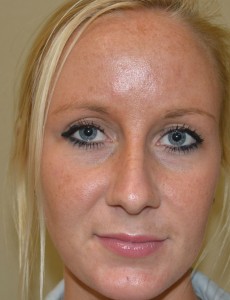
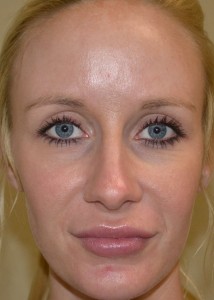
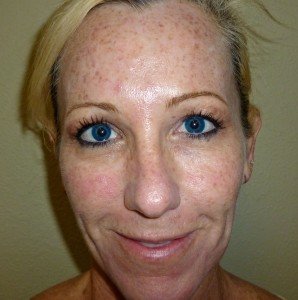
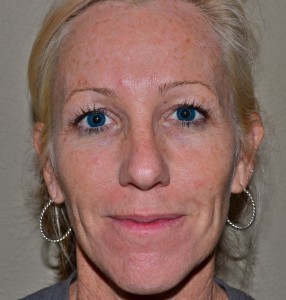
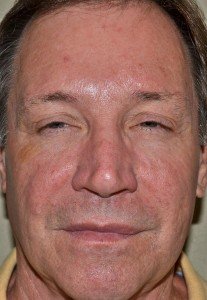
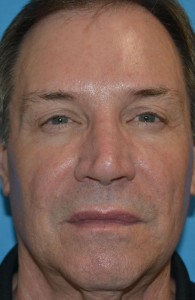
When Do You See Results from Laser Skin Rejuvenation
Improvement is gradual. It may take several months to see the full effects. When a laser that does not require downtime is used, a series of treatments may be necessary to see the desired results. The number of treatments varies from person to person; however, between 3 and 6 treatments is the norm.
Effectiveness
Research shows that laser rejuvenation can dramatically reduce fine lines around the eyes and mouth and on the cheeks. With 1 treatment, age spots can be diminished by 50% and may be completely eliminated with follow-up treatments. Laser skin resurfacing can significantly reduce deep lines, effectively remove some shallow scars, and tighten the skin.
While lasers may sound like magic wands, they are not. It is important to have realistic expectations. Laser skin rejuvenation can be effective, but does not work for everyone.
Some skin tightening is possible, but lasers cannot produce the same degree of lifting seen after a surgical facelift or eyelid lift. Wrinkles caused by constant muscle movement such as frown lines can be hard to treat with lasers alone. Another procedure such as botulinum rejuvenation may be used along with a laser to obtain the desired results.
How Long Results Last
It is possible to permanently remove some signs of aging such as a spider vein, age spot, or scar. However, laser skin rejuvenation cannot stop the skin from continuing to age. Crow’s feet may re-appear and new age spots can develop. Because sun exposure accelerates signs of aging, protecting the skin from sun exposure will lengthen the amount of time that the results last. Protecting the skin from the sun also can prevent some signs of aging from re-appearing such as blotchy skin and dark patches.
The office of Dr. Mark Bishara and The Paragon Plastic Surgery & Med Spa offers many laser skin rejuvenation procedures. If you are considering a laser or other light-based treatments to rejuvenate your skin please contact our office and speak with one of our aestheticians to find out more information. Please call (817) 473-2120 or visit our Website at www.MarkBisharaMD.com.
Dr. Mark Bishara’s Paragon Plastic Surgery & Med Spa offers a variety of laser treatments for correction of skin tone and texture, acne, fine lines and wrinkles, spider veins, unwanted hair, and tattoo removal.
Skin Resurfacing
One of the most popular anti-aging procedures that improves the appearance of fine lines, wrinkles, scars and various other texture concerns. Minimal downtime is expected.
Skin resurfacing can be used to treat:
- Wrinkles
- Sun damage
- Crow’s feet
- Brown spots
- Blotchiness
- Precancerous growths
- Acne
- Chicken pox scars
- Superficial facial scars
ClearLift- Non-Ablative Fractional Skin Remodeling
A great alternative to skin resurfacing. Offers significant improvement to fine lines, wrinkles, and scarring without downtime or discomfort.
Laser Hair Removal
 Laser hair removal is ideal for patients with dark hair and light skin, although nearly anyone with unwanted facial or body hair can benefit from this procedure. This procedure can be performed on the lip, chin, neck, back, arms, legs, bikini area and more.
Laser hair removal is ideal for patients with dark hair and light skin, although nearly anyone with unwanted facial or body hair can benefit from this procedure. This procedure can be performed on the lip, chin, neck, back, arms, legs, bikini area and more.
After laser hair removal, patients may experience redness, puffiness and sunburn sensations for the first few days. You may return to work and other regular activities as soon as you feel comfortable. Three to seven days after treatment, patients may notice what appears to be a re-growth of hair, but is actually a shedding of the treated hair, which will fall out and not grow back.
Since hairs grow at different times, multiple treatments will be needed for all patients at intervals of four to six weeks. Virtually pain-free, safely and visibly reduces unwanted hair over a series of 6-9 treaments.
- Lip
- Face
- Arms (Full)
- Arms (Upper or Lower)
- Legs (Full)
- Legs (Upper or Lower)
- Chest
- Chest and Abdomen
- Chin
- Underarms
- Brazilian Bikini
- Bikini
- Neck
- Face and Neck
- Back
- Buttocks
Dr. Bishara and the Paragon Plastic Surgery & Med spa offer many more laser treatments for the face and body as well as injectables, such as Botox, Xeomin, Juvederm Ultra Plus XC and the NEW Juvederm Voluma. Please visit our website for more information at www.MarkBisharaMD.com or call our office at (817) 473-2120.


